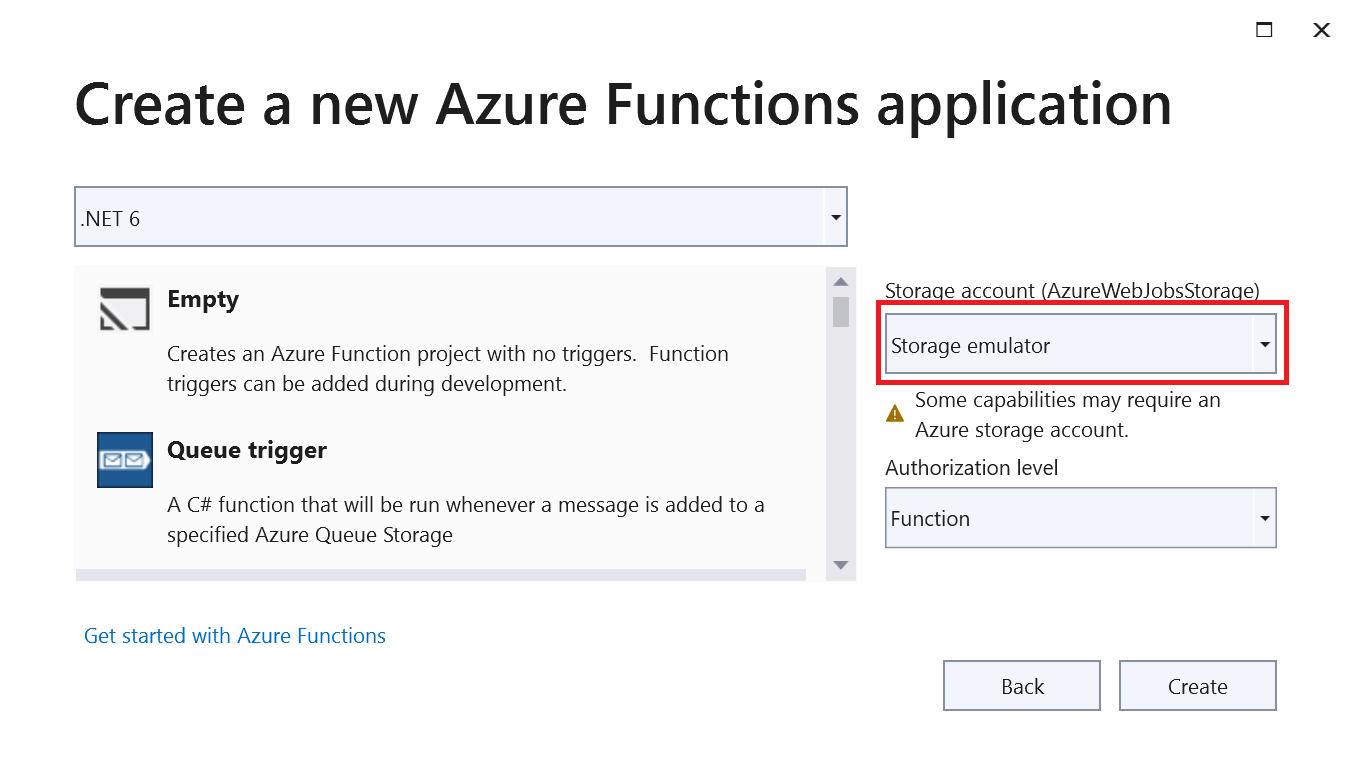

- Azure storage emulator requires localdb full#
- Azure storage emulator requires localdb code#
- Azure storage emulator requires localdb series#
- Azure storage emulator requires localdb windows#
Azure storage emulator requires localdb windows#
Create your new LocalDB instance with the same name or a different one. CAQuietExec: Windows Azure Storage Emulator 3.0.0.0 command line tool CAQuietExec: Error: Cannot create.If you feel more comfortable you can choose to stop the LocalDB instance before you delete.Here is the steps necessary to perform these tasks: Nevertheless, I managed to solve this issue by simply recreating my LocalDb instances and allowing the emulator to recreate his db files. I don’t know if all these steps are necessary or not, I was just simple frustrated about this situation because I need to present this topic in my upcoming sessions this week, so I didn’t test all the hypotheses available properly. CauseĪgain, I can’t find any plausible reason for this to start happend, except the fact that my machine installed some system updates. Resolve these errors before attempting to run the storage emulator again. One or more initialization actions have failed.

(provider: SQL Network Interfaces, error: 26 – Error Locating Server/Instance Specified) Verify that the instance name is correct and that SQL Server is configured to allow remote connections. The server was not found or was not accessible. SqlError: : A network-related or instance-specific error occurred while establishing a connection to SQL Server. Storage Explorer requires the emulator to be running before you open it. Azurite, which is based on Node.js, is an open-source emulator that supports most Azure Storage commands through an API. It emulates the Azure Table, Queue, and Blob storage. (provider: SQL Network Interfaces, error: 26 – Error Locating Server/Instance Specified) Azure Storage Emulator uses a local instance of Microsoft SQL Server 2012 Express LocalDB. A network-related or instance-specific error occurred while establishing a connection to SQL Server. Probing SQL Instance: ‘localhost\SQLExpress’.Ĭaught exception while probing for SQL endpoint. Error occurred during LocalDB instance startup: SQL Server process failed to start.


(provider: SQL Network Interfaces, error: 50 – Local Database Runtime error occurred. A network-related or instance-specific error occurred while discovering a connection to SQL Server. Probing SQL Instance: ‘(localdb)\MSSQLLocalDB’.Ĭaught exception while probing for SQL endpoint. This tool will use a local Microsoft SQL Server Express LocalDB instance (you can also use a SQL Server instead) to emulate Azure storage services.Įverything was working properly for the last four months or more, however for no plausible reason today while I was trying to start the Microsoft Azure Storage Emulator I got this error:
Azure storage emulator requires localdb full#
Microsoft Azure Storage Emulator 5.10 tool – This tool is necessary to have the full Logic Apps designer support in VS Code.
Azure storage emulator requires localdb code#
One of the requirements necessary to have the full Logic Apps designer support in VS Code is the Microsoft Azure Storage Emulator 5.10 tool This means that now you can run Logic Apps anywhere: in the cloud, on-premises, locally on your laptop, or wherever you need to. To contextualize better this reason and blog post, I have been testing the new Logic Apps (Preview) for a while, and if you already try it before, you will know that this new type of Logic Apps runs on top of Azure Function Runtime. This was kind of the first thing I thought when I saw this error happen since that didn’t make sense at all.
Azure storage emulator requires localdb series#
$subnetConfig = New-AzVirtualNetworkSubnetConfig ` -Name Syncpublicnet ` -AddressPrefix 10.0.0.0/24 $virtualNetwork = New-AzVirtualNetwork ` -Name Syncvnet ` -AddressPrefix 10.0.0.0/16 ` -Location $location ` -ResourceGroupName $resourceGroup ` -Subnet $subnetConfigģ.I usually use the series A fish out of water when I want to write something that goes a little bit off-topic on my main blog topic: Enterprise Integration. Create a subnet and virtual network in the same location as resource group: $resourceGroup = 'learn-file-sync-rg' $location = 'EastUS' New-AzResourceGroup -Name $resourceGroup -Location $locationĢ. Run following to create a resource group (set location = to location near you): Using Cloud Shell in Azure portal (PowerShell):ġ.


 0 kommentar(er)
0 kommentar(er)
